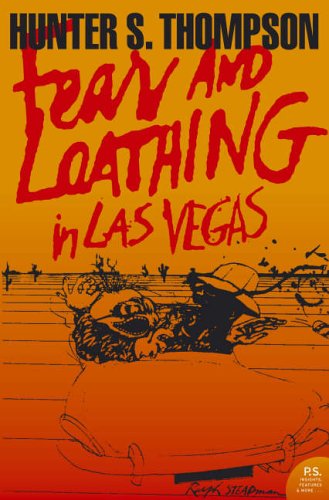“There are only two adjectives writers care about any more! “brilliant” and “outrageous”! and Hunter Thompson has a freehold on both of them,” reads the back-cover blurb on my copy of Fear & Loathing in Las Vegas. Growing up a step behind Generation Y, or whatever they’re calling us these days (Generation URL?), one can’t help but wonder if video game culture and über-violence in film haven’t hardened us up a little since Hunter S. Thompson’s heyday in the 1970s. Any shock or outrage caused by his books surely died with him back in February 2005.
As well you know, Fear & Loathing in Las Vegas: A Savage Journey to the Heart of the American Dream is the story of a drug-addled Dr Raoul Duke (Thompson’s nom de guerre) and his attorney Dr Gonzo as they descend upon Las Vegas to attend a Mint 400 motorcycle race. What follows is a haze of mescaline, LSD, acid, and ether-induced events. The real and surreal within the story are tightly entwined, just as Thompson’s autobiographical events are indistinguishable from the moments that are products of his own imagination.
While it makes no claims to be the Great American Novel, I still felt as though something was missing. There’s plenty of story but we’re left with a mere sliver of plot. It has been years since I watched Terry Gilliam’s film adaptation of Fear & Loathing starring Johnny Depp and Benicio Del Toro, and I can’t say I remembered much beyond the spinning restaurant. Oddly, I enjoyed the first half of the film and the second half of the book in equal measure, and hated the rest. Maybe through an interactive, multimedia approach we could start a whole new breed of film and literary appreciation. Or perhaps I’d be worth little more than these three stars.
